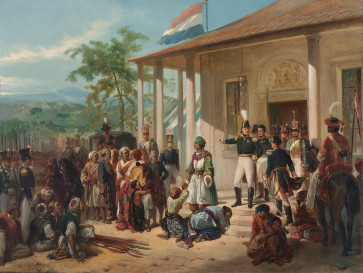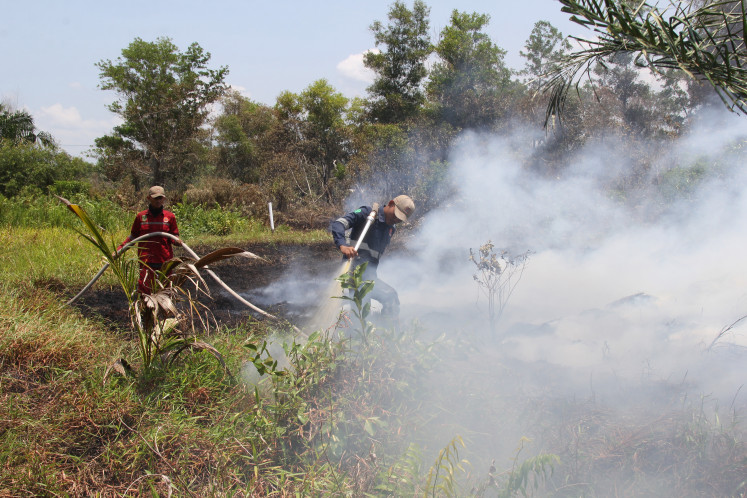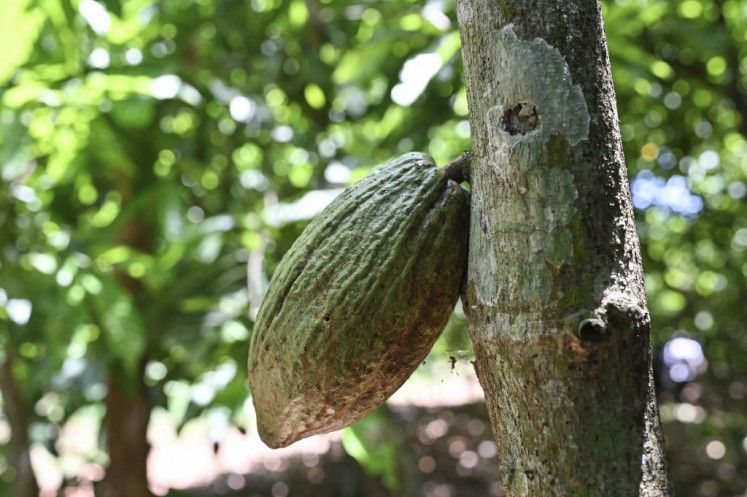Popular Reads
Top Results
Can't find what you're looking for?
View all search resultsPopular Reads
Top Results
Can't find what you're looking for?
View all search resultsFrom heritage to A thriving economy
Ancient: Batik home industries have developed after UNESCO recognized batik as a cultural heritage of Indonesia in 2009
Change text size
Gift Premium Articles
to Anyone
Ancient: Batik home industries have developed after UNESCO recognized batik as a cultural heritage of Indonesia in 2009.
Apart from being part of the nation’s cultural heritage, gedog batik from Tuban, a coastal city in East Java, is also a prize commodity for the region, helping to alleviate poverty and accelerate economic growth in the community.
The noisy sounds of numerous weaving looms — hence the name gedog — and the rows of hundreds of workers’ bicycles mark the daily activity at a batik home industry owned by Ikhwan Ashari, 38, in Kedungrejo village in Kerek district, Tuban.
“Decades ago this village was deserted. Batik making was just women’s side work to help their husbands who farmed earn extra income. Now the strengthening village economy relies on gedog batik,” Ikhwan told The Jakarta Post recently.
Ikhwan said over 30 batik producers in his village had recorded at least Rp 2 billion (US$206,780) worth of annual turnover and employed more than 3,000 gedog batik craftspeople.
After UNESCO’s recognition of batik as a cultural heritage of Indonesia in 2009, gedog has been exported to Asian and European countries as well as to the US.
Dyed: Ikhwan, a batik maker in Tuban, now employs 124 workers.
Born into a family of batik makers, Ikhwan started his batik work in 2008 after his brick-making business closed down in 2007. Undaunted by his previous failures as an airline steward and a laborer in Jakarta and in his own village, he finally tried his luck at making gedog batik at home.
With Rp 300,000 as starting capital, derived from his wife’s door-to-door batik sales earnings, Ikhwan now nets a monthly profit of about Rp 500 million, with 124 workers and dozens of distribution networks that also handle overseas marketing, partly with capital and promotion aid from East Java’s cement producer, PT Semen Gresik.
Mohammad Sholeh, 54, another gedog batik producer, said the traditional product of Tuban was now crafted by local youth rather than only by adult women.
“Not only the schools in Tuban, those in East Java also have included batik making in their curricula to preserve gedog, proving the product’s contribution to the regional economy,” said the primary school teacher.
PT Semen Gresik president director Dwi Soetjipto said Tuban’s gedog batik industries managed by Ikhwan and Sholeh were two of the 7,614 businesses taking part in a partnership program with the company, the businesses increasing every year.
Industrious: Gedog batik from Tuban has helped to improve the local economy.
“The growing figures represented small- and medium-scale gedog batik enterprises’ greater contribution to the creation of employment and the improvement of living standards in East Java, particularly in Tuban,” he said.
Data from East Java’s Statistics Agency shows that the poverty rate in the province, with a population of over 37 million, has declined since 2008. In 2008, the poverty rate was 19 percent, which decreased to 17 percent in 2009 and to 13 percent in 2011.
According to local elders, gedog batik has existed since the Majapahit era between the 12th and 14th centuries. Tuban was founded in 1293, and was a maritime city and a commercial gateway to trade with China and the Middle East.
Tuban’s unique version of batik is thus uniquely influenced by Javanese, Hindu, Chinese and Arab cultures.
Colored: A woman rinses freshly dyed gedog batik in Tuban.
Rich: Gedog batik has a distinctive pattern unique to the coastal city that shows influences from Hindu, Javanese, Chinese and Arab cultures.
— Photos By JP/Indra Harsaputra














